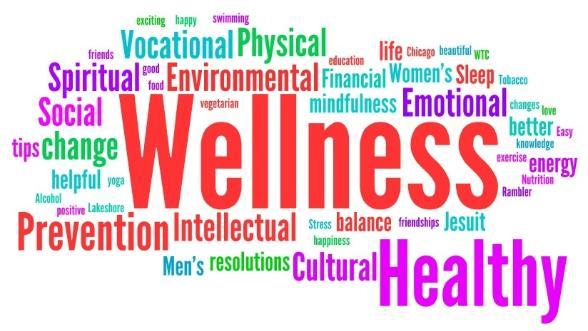In a fast-paced world defined by deadlines, screens, and constant stimulation, wellness has become more than a buzzword — it is a movement, a lifestyle, and a return to the basics of human well-being. Unlike the traditional view of health as merely the absence of disease, wellness encompasses a holistic state of physical, mental, emotional, and social well-being. It is not a destination but an ongoing process of making conscious, healthy choices.
What is Wellness?
Wellness refers to the active pursuit of activities, choices, and lifestyles that lead to a state of holistic health. It is both a mindset and a set of habits aimed at achieving balance in various aspects of life. The concept recognizes that well-being is multi-dimensional and interconnected.
The eight commonly accepted dimensions of wellness are:
-
Physical Wellness – Taking care of the body through exercise, nutrition, and sleep.
-
Emotional Wellness – Understanding and managing feelings and coping effectively with stress.
-
Intellectual Wellness – Engaging in mentally stimulating activities and lifelong learning.
-
Social Wellness – Building meaningful relationships and maintaining a supportive social network.
-
Spiritual Wellness – Connecting to beliefs, values, and a sense of purpose or meaning.
-
Occupational Wellness – Finding satisfaction and enrichment in one’s work or academic life.
-
Environmental Wellness – Living in harmony with the surroundings and preserving natural resources.
-
Financial Wellness – Managing resources wisely and planning for the future to reduce stress.
True wellness is the balance and synergy of all these dimensions.
Why Wellness Matters
Neglecting wellness can lead to a host of physical and psychological issues, such as chronic stress, fatigue, anxiety, heart disease, obesity, and depression. In contrast, when people invest in their wellness, they experience:
-
Improved mood and mental clarity
-
Greater productivity and focus
-
Enhanced physical health
-
Stronger immunity
-
Better relationships and social bonds
-
Increased resilience and life satisfaction
In short, wellness is the foundation of a fulfilling, happy, and meaningful life.
The Pillars of Wellness
To achieve a state of wellness, certain foundational practices are essential. These pillars serve as the daily habits that support overall well-being:
1. Balanced Nutrition
Eating a variety of nutrient-rich foods supports brain function, energy levels, and immune health. Diets high in fruits, vegetables, whole grains, and lean proteins contribute significantly to wellness.
2. Regular Physical Activity
Exercise strengthens the heart, improves mood, boosts energy, and lowers the risk of many diseases. Even a daily walk or yoga session can make a significant difference.
3. Adequate Sleep
Sleep is essential for recovery, memory, emotional regulation, and physical repair. Adults generally need 7–9 hours per night for optimal wellness.
4. Stress Management
Chronic stress affects every system in the body. Practices like meditation, deep breathing, journaling, or engaging hobbies help manage stress levels.
5. Mindfulness and Mental Health
Mental health is just as important as physical health. Seeking therapy, practicing mindfulness, and staying emotionally self-aware are key steps.
6. Social Connection
Healthy relationships nurture emotional security and belonging. Spending time with loved ones and being part of a community greatly enhances wellness.
7. Purpose and Passion
Having a sense of purpose, whether through career, creativity, spirituality, or service, gives life direction and joy.
Modern Threats to Wellness
In the 21st century, wellness faces new challenges:
-
Digital overload – Constant screen time leads to eye strain, mental fatigue, and poor sleep.
-
Sedentary lifestyles – Desk jobs and reduced physical activity contribute to health problems.
-
Processed foods – Easy access to unhealthy, packaged foods harms nutrition.
-
Isolation – Despite being more connected digitally, real human connection is declining.
-
Work-life imbalance – Hustle culture glorifies burnout rather than balance.
Recognizing and resisting these pressures is vital to preserving one’s wellness.
Wellness in Schools and Workplaces
Wellness is not just a personal matter — it should be nurtured in every environment, especially where people spend most of their time. Schools that prioritize mental health, physical activity, and emotional education produce healthier, more resilient students.
Similarly, workplaces that support wellness through flexible hours, mental health resources, ergonomic design, and a culture of respect experience higher employee satisfaction, productivity, and retention.
How to Begin Your Wellness Journey
Starting a wellness journey doesn’t require a drastic lifestyle change. It begins with small, consistent steps:
-
Drink more water
-
Take short walks during the day
-
Practice gratitude every morning or night
-
Limit screen time before bed
-
Reach out to a friend or family member
-
Try breathing exercises during stressful moments
-
Eat one healthy meal a day to start
Over time, these small changes build into powerful habits that improve overall well-being.
Conclusion: A Lifelong Commitment
Wellness is not about perfection. It’s about progress, self-awareness, and balance. It’s a journey that evolves with age, circumstances, and experiences. In a world filled with noise, stress, and distraction, choosing wellness is an act of self-respect and empowerment.
Whether you're a student balancing studies and emotions, a professional navigating work stress, or simply someone trying to live better — wellness offers a path to live with greater vitality, peace, and purpose.
Because when you take care of yourself, you don’t just live longer — you live better.

